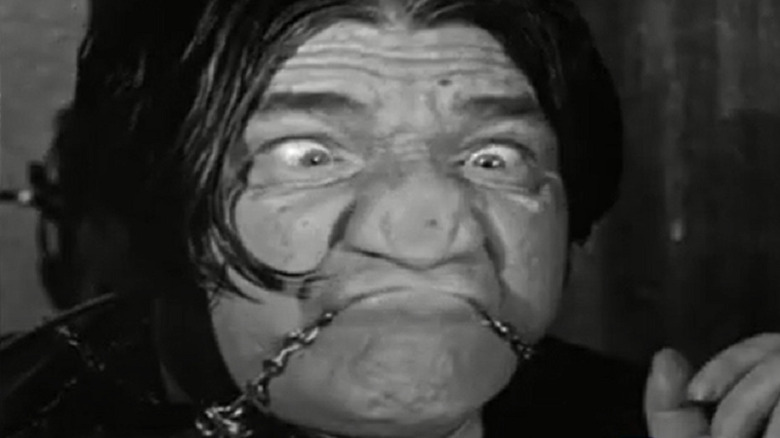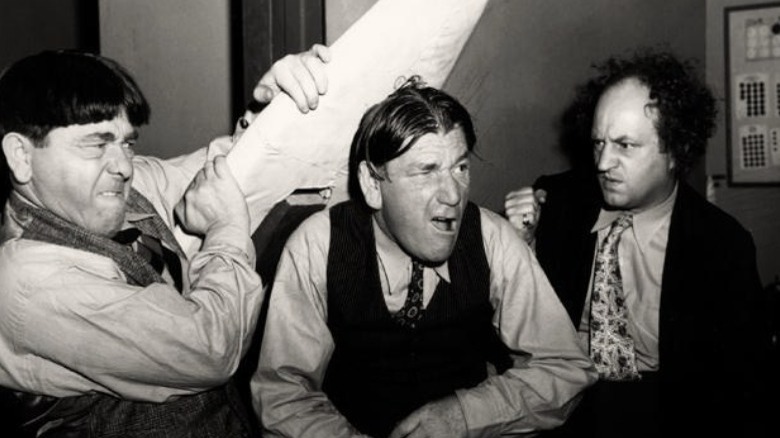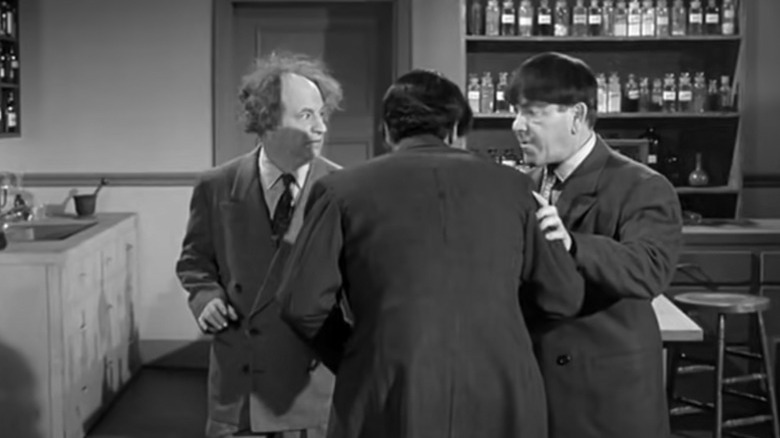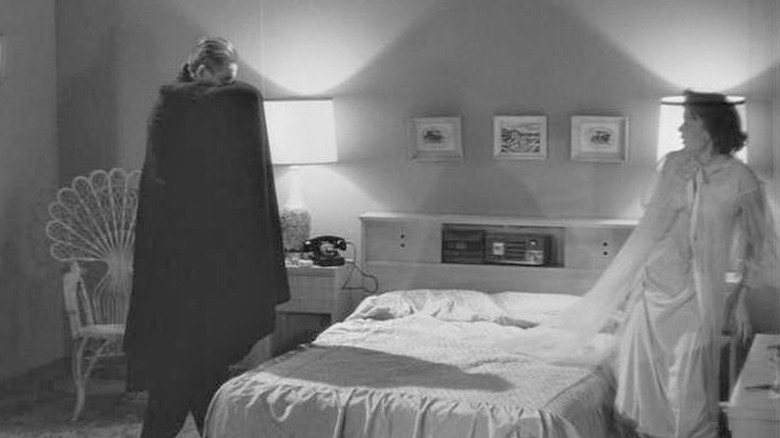How The Death Of The Three Stooges' Shemp Howard Led To A Popular Film Technique
Given that they're regarded as comedy legends who, whether directly or indirectly, influenced every generation of comedians who came after them, the Three Stooges dealt with their fair of tragedy. One of those tragedies — the death of Shemp Howard — actually led to a technique that is used fairly often across the entertainment industry. It involves using a body double to replace an actor or actress who for whatever reason is unable — or unwilling — to perform. The Three Stooges did this to tie up loose ends in the immediate aftermath of Shemp's death, and the technique became appropriately known as the Fake Shemp, per Sensitive Skin.
Moe and Shemp Howard were brothers, and according to the Three Stooges, they grew up in Brooklyn with aspirations of breaking into show business. Their actual names were Moses Horwitz and Sam Horwitz, with the nickname Shemp coming from the way their mother used to say the name "Sam." The Howards performed together on the vaudeville circuit but without much success.
In the early 1920s they teamed up with a vaudeville comedian named Ted Healy and a few years later they were joined by Larry Fine and the Three Stooges were born. For the first part of their career, they were billed as Ted Healey and His Stooges, according to Britannica.
Shemp Howard leaves the Stooges, then returns, then makes his final exit
Shemp Howard was not fond of Ted Healy. Healy was known for excessive drinking (a fact that some attribute to his 1937 death after which he was allegedly in a fight, per Daily Telegraph) and Shemp was tired of not getting paid on time, so he left the Stooges in 1932 as Sensitive Skin notes.
Shemp's replacement was his brother Jerome "Jerry" Howard, who went on to take the stage name Curly. With their classic lineup of Moe, Larry, and Curly in place, the Three Stooges went on to make a series of films for Columbia Pictures while Shemp went off and had his own career. Unfortunately, Curly suffered a debilitating stroke in 1946 that forced him into retirement, according to Britannica. Shemp rejoined the Stooges and they continued to produce successful films.
On November 23, 1955, Shemp Howard had just left a boxing match in Los Angeles. He and a friend hailed a taxicab and hopped in for the ride to Howard's North Hollywood home, as the Three Stooges writes. He reportedly had just lit a cigar when he suffered a massive heart attack and died.
Shemp Howard's death made the Stooges think outside the box
Of course, losing Shemp was a blow to the Stooges. As for Moe Howard, he had lost a more than comedy partner, he had lost a brother. Moreover, Shemp's death also put the surviving Stooges in a bind from a production and business standpoint. Before Shemp's death, the Three Stooges and Columbia had agreed to a new deal, and the studio told theater owners that they could expect eight new Three Stooges shorts. However, Shemp died with only four shorts in the can.
To make up for this, the Stooges and Columbia had to get creative. The first step was to cut together a few new shorts using some old footage of Shemp, but still, there were a lot of gaps that needed to be filled. Shemp Howard was very much unavailable, so the studio used a technique that became known as a Fake Shemp.
According to Sensitive Skin, Joe Palma, who had appeared as a supporting actor in a bunch of Stooges shorts served as the late comedian's body double for the new scenes. Most of the time, Palma is seen from the back to disguise the fact that he wasn't Shemp, but the results were not great. It was fairly obvious what had been done, but they had created a technique that went on to be used a great deal in Hollywood.
Fake Shemps became common in Hollywood
Of course, the Stooges were trying to replace Shemp in an era long before CGI could digitally insert him into shots or put his face on a body double. But, their efforts showed that this sort of thing was doable in the event of an actor's death or other circumstances that would prevent them from working. Just a few years later, director Ed Wood famously used the technique to put horror icon, Bela Lugosi, in his film "Plan 9 From Outer Space." Lugosi had died in the early stages of production and the actor Wood chose to be his double not only looked nothing like Lugosi, but he was also significantly taller. According to Mental Floss, this is the reason the body double has his cape over his face in every shot.
A cast member's death isn't the only reason a production might need to employ a Fake Shemp. While shooting "Superman II" director Richard Donner was fired before the film was finished and a new director, Richard Lester was brought in. Actor Gene Hackman — who played villain Lex Luthor — didn't agree with Donner's firing and refused to participate in reshoots. Lester used both body doubles and voice actors to Fake Shemp Hackman into the final cut of the film.



